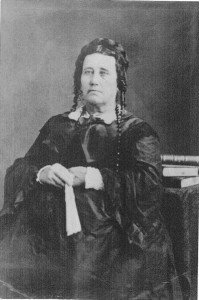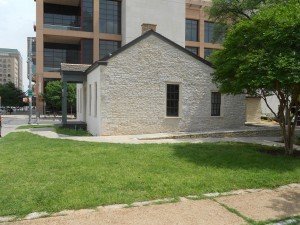The story of the Alamo and Santa Anna’s victory at the Battle of the Alamo in 1836 is probably the most publicized story of Texas’ fight for independence. The Alamo story is also the story of a woman by the name of Susanna Dickinson who survived this epic battle. Susanna Dickinson was among the women inside the Alamo mission during this March 1836 battle and it is from her memoirs that the world learned of just how this battle unfolded. In fact, Susanna Dickinson had the distinction of being one of only two survivors among the Alamo’s Texan defenders.
Thank you for reading this post, don't forget to subscribe!
Susanna Dickinson was present at the Alamo with her husband, Captain Almaron Dickinson. The Dickinson’s had relocated to Texas from Tennessee in 1831. Captain Dickinson was among many Texans who felt war with Mexico was inevitable. After their expulsion of the Spaniards from the North American continent during the early 1820’s, the Mexican rulers were trying to consolidate their possessions into a central government. This decision from Mexico City made war with the Anglo Texans a matter of not if but when.
After the Alamo defenders were defeated, Susanna Dickinson was personally interviewed by Santa Anna. In an effort to send a warning to the Texians to the east, Susanna Dickinson was allowed to go home to Gonzales to tell the story of what occurred at the Alamo. Santa Anna wanted Dickinson to tell her fellow Texians that Santa Anna’s army was too big to fight against.

The result of allowing Susanna Dickinson to go free did indeed initially work in Santa Anna’s favor. Sam Houston ordered Texian settlers and his 400 man force to further east to avoid the Mexican army. The retreat of course was only the beginning of what would become the legendary war for Texas independence which would end at the Battle of San Jacinto and the defeat and capture of Santa Anna himself. Santa Anna’s ploy probably did more than anything to galvanize the resistance against Mexican rule and fostered the creation of the famed battle cry, “Remember the Alamo“.
The story of Susanna Dickinson is significant in the fact that this woman was able to survive the Battle of the Alamo to relate it’s details for posterity. Because Susanna Dickinson survived and was allowed to return home, we have detailed knowledge today of what took place in San Antonio during early March of 1836.
During her life after the Alamo and the Texas War of Independence, Susanna Dickinson married several times before her last marriage to a merchant named J.W. Hannig. She was married to Hannig until her death in 1883 and is buried in Austin Texas. It is the house built for her by Hannig that sits today in Austin Texas as the Susanna Dickinson Museum. Susanna Dickinson’s historical significance was a simple product of fate. She essentially was used as a messenger for Santa Anna and this splendid museum in Austin Texas is dedicated to telling her story. The museum has many programs for both adults and children and features a library of over 500 books.

The Susanna Dickinson home and museum is next door to another Austin Texas historic tourist attraction, the O Henry Museum. This museum of course tells of the somewhat strange life of O Henry who at one time resided in Austin.
Today’s Austin Texas tourist will find the Susanna Dickinson Museum right in the heart, as you can see from the photos, of Austin Texas at 411 East Fifth Street.
There are two other very good Austin Texas stops to put on your trip planner, also in the downtown area of Austin. These are the Driskill Hotel which is an 1800’s architectural and historic masterpiece as well as one of Austin’s most popular hotels. The other is the Texas state capital building, just a few blocks north of the Driskill, which was built in the 1880’s with revenue received from selling over 3 million Texas Panhandle acres for what would become the famed XIT Ranch.
You may also enjoy our trips Into History article…The Resting Place of the Alamo Defenders
(Article copyright Trips Into History. Photos of Susanna Dickinson Museum are from author’s private collection. Photo of Susanna Dickinson is from the public domain)
